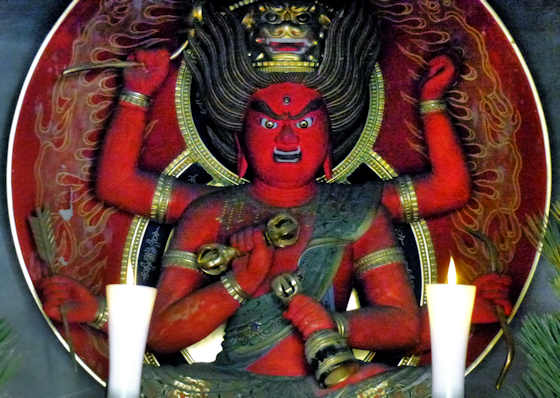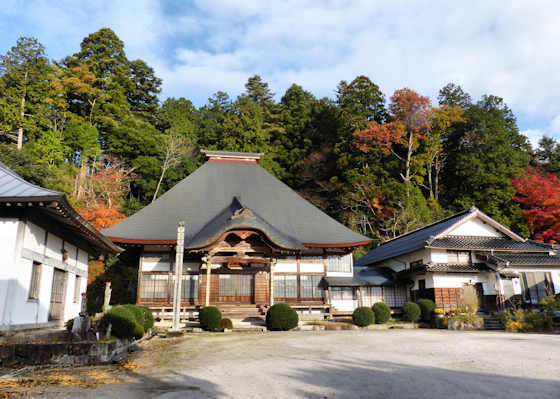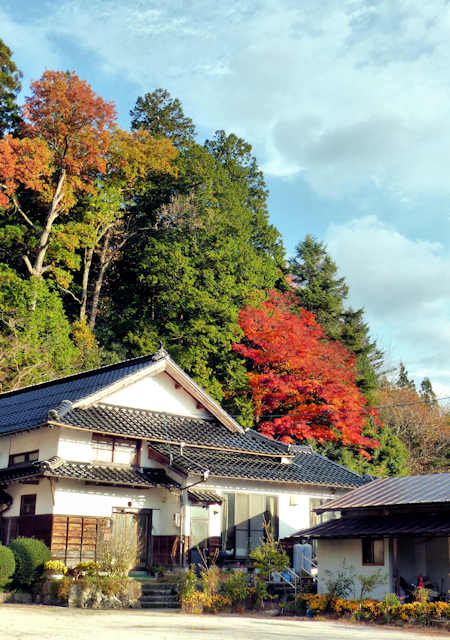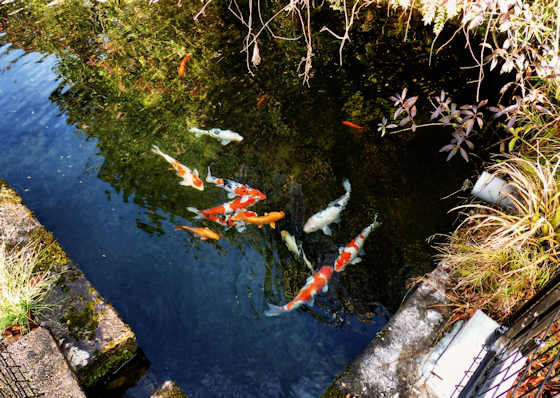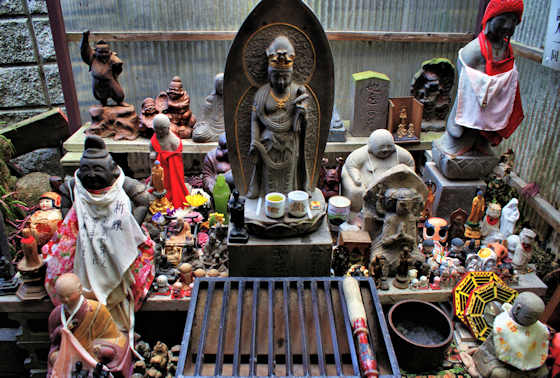There is a cluster of three related temples called Tsubakido in a small side valley in the mountains of the Kunisaki Peninsula, and they are very popular for the practice of a fundamental aspect of Japanese religious activity called genze riyaku, which translates as praying for benefits in this world rather than for any future world, paradise, heaven etc.
Benefits would include all kinds of success, in health, business, school, sports, love, childbirth, etc etc, as well as protection from disasters and misfortune like disease, traffic safety, fire, angry ghosts and demons, etc.
Many temples, and shrines, specialize in particular benefits, and some have a wide range of deities, altars, statues, etc dedicated to many different benefits. Tsubakido is one such temple.
According to the temple's origin story, Kobo Daishi himself visited this spot after returning from China. He struck the ground inside the small cave that now constitutes the okunoin of the temple, with his staff made of camelia wood and the sacred spring burst forth.
The water is considered healing water and bottles of it can be purchased and taken away. Piles of canes, casts, splints, braces, etc. attest to the miraculous healings that have taken place. Most curious are collections of black hair, said to be more than a thousand, that have been left by people healed by the waters.
There are numerous Kannons enshrined here, including a cancer-cutting Kannon, a Kannon for "mercy to all creatures", pictured at the bottom of this post, a kind of Japanese-Buddhist St, Francis, as well as Kannons for matchmaking, safe childbirth, and so on.
Outside, next to the bell tower is a newer Kannon, one that slows down the effects of senility..... a Kannon that is becoming more widespread as Japan ages rapidly.
As well as Kannon, the other very, very popular bodhisattva in Japan is Jizo, of which Tsubakido has many examples including the modern
Mizuko Jizo, and an Osasuri Jizo that you rub on the part of the statues that you desire healing for your own body.
There is a branch of Fushimi Inari Shrine which is for prayers for business success. There are a couple of historical examples of onigawara roof tiles that are used to protect the temple buildings from evil.
Shamoji, the flat wooden spoons or rice scoops are used, like ema, to write prayers upon. This seems to have derived from an early 20th-century practice of praying for military victory.
The temple (s) are part of several pilgrimages, though not part of the Kyushu Fudo Myo Pilgrimage that I was on my second day of. I was also following the Minemichi Long Trail which roughly follows the old yamabushi pilgrimage route around the peninsula.
Worldly benefits temples like Tsubakido are usually very festive and colourful and often offer a staggering number of statues to experience. I suspect they are not hard up for money.
































